Alaska Native Corporation (ANC) Advantage
Strata-G may receive a sole source contract up to $100 million, and with proper justification, unlimited dollar amounts sole source.
Other 8(a) companies can only receive sole source awards for manufacturing contracts up to $6.5 million and for service contracts up to $4 million.
What is the 8(a) sole source process?
Strata-G as an ANC 8(a) is exempt from competitive thresholds. Contracting Officers (COs) may award sole source 8(a) contracts to an ANC 8(a) participant when the anticipated value of the procurement exceeds the applicable competitive threshold and if SBA has not accepted the requirement into the 8(a) BD program as an 8(a) competitive procurement. There is no requirement that a procurement must be competed whenever possible before it can be accepted on a sole source basis to Strata-G as an ANC 8(a). – 13 C.F.R. 124.506(b).
No Protests on 8(a) Sole Source Contracts to ANCs/Strata-G Per 13 C.F.R. 124.517(a): The eligibility of a Participant for a sole source or competitive 8(a) requirement may not be challenged or protested by another Participant or any other party, either to SBA or any administrative forum as part of a bid or other contract protest.
A Helpful Resource to Explain the 8(a) Sole Source Process
Section 8(a) of the Small Business Act
Agencies can also contract with ANC-owned firms, although not necessarily ANCs themselves, under the authority of Section 8(a) of the Small Business Act of 1958, as amended. Section 8(a) generally authorizes set-asides and sole-source awards to “socially and economically disadvantaged small business concerns,” which include firms at least 51% owned and unconditionally controlled by ANCs, Indian tribes, Native Hawaiian Organizations (NHOs) or Community Development Corporations (CDCs). Strata-G is 100% wholly owned subsidiary of The Aleut Corporation (TAC) and an 8(a) Certified SDB.
Contracts whose value is at or below the so-called “competitive threshold” ($4 million, $6.5 million for manufacturing contracts) may generally be awarded on a sole-source basis, without the competition among 8(a) firms that would result if the contract were set aside.(Note: ANCs have additional privileges where sole source awards can be made up to $100,000,000 ($100M) without any special justification and over $100,000,000 ($100M) with appropriate justification)
History of ANCs
ANCs were created under the authority of the Alaska Native Claims Settlement Act (ANCSA), enacted in 1971 to settle Alaska Natives’ aboriginal land claims to most of Alaska.
Congress intended ANCs Small Disadvantaged Business (SDB) to be vehicles for the economic development of Alaska Natives shareholders.
General Small Business Authorities
One of the alleged “special provisions” governing contracting with ANCs, discussed below, arguably assists ANC-owned firms in qualifying as “small” for purposes of contracting under the general small business authorities.
While all affiliations between businesses, or relationships allowing one party control or the power of control over another, count when the SBA makes size determinations, certain affiliations with the parent ANC or its subsidiaries are generally excluded when the SBA determines the size of an ANC-owned firmAlthough the SBA is authorized to consider these affiliations when not doing so results, or is likely to result, in an ANC-owned firm obtaining a “substantial unfair competitive advantage within an industry category,” the SBA and agencies exercising delegated authority on its behalf reportedly seldom exercise this authority.
5% “Subcontracting Bonus”
Federal prime contractors are eligible for a “subcontracting bonus” equal to “5 percent of the amount paid, or to be paid, to a subcontractor” when they subcontract with ANCs or ANC-owned firms, among others. Congress authorized such bonuses in 1988, in part, because of concerns that federal prime contractors had less incentive to use Indian-owned subcontractors than other minority-owned subcontractors because of the geographical “remoteness of [Indian] reservation[s].” Congress also appropriated funds for the Department of Defense (DOD), in particular, to pay subcontracting bonuses. The amount appropriated remained constant at $8 million per year between FY1989 and FY2006, and was increased to $15 million per year during the 110th Congress. Other agencies have not received similar appropriations to pay subcontracting bonuses, but have the same statutory authority to pay them that DOD has.
To be eligible for a bonus, the prime contractor must use its best efforts to give Indian organizations and Indian-owned economic enterprises … the maximum practicable opportunity to participate in the subcontracts it awards to the fullest extent consistent with the efficient performance of its contract.

Keeping You Mission Ready
Critical missions require turn-key solutions. From concept to design to implementation, Strata-G Solutions is your solution for keeping the warfighter mission ready.
Tell us about your next mission.
